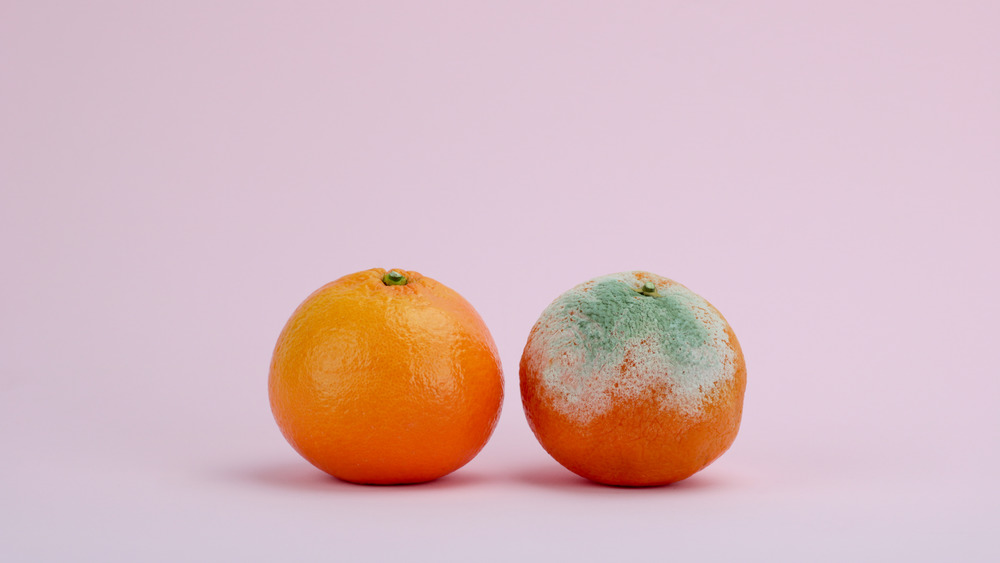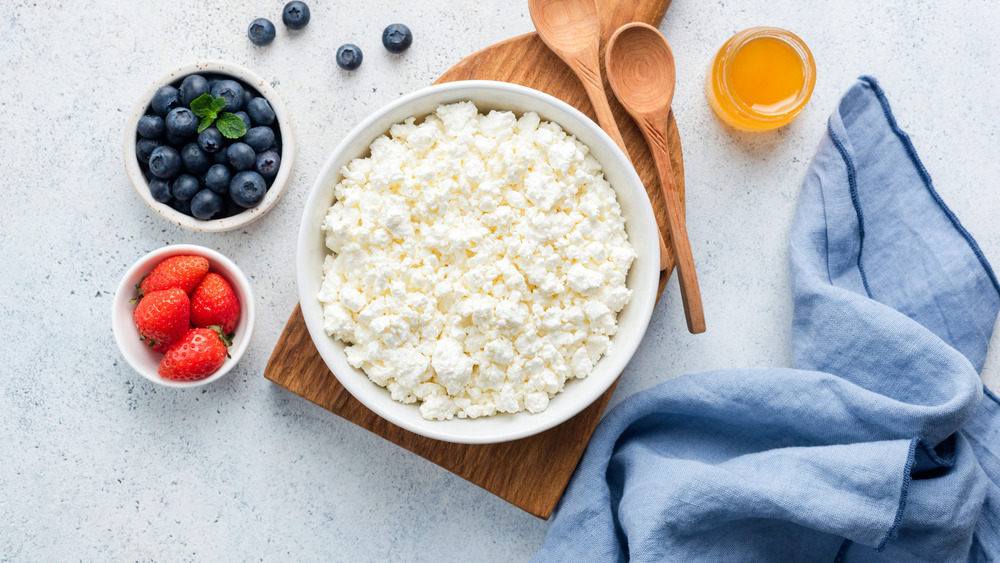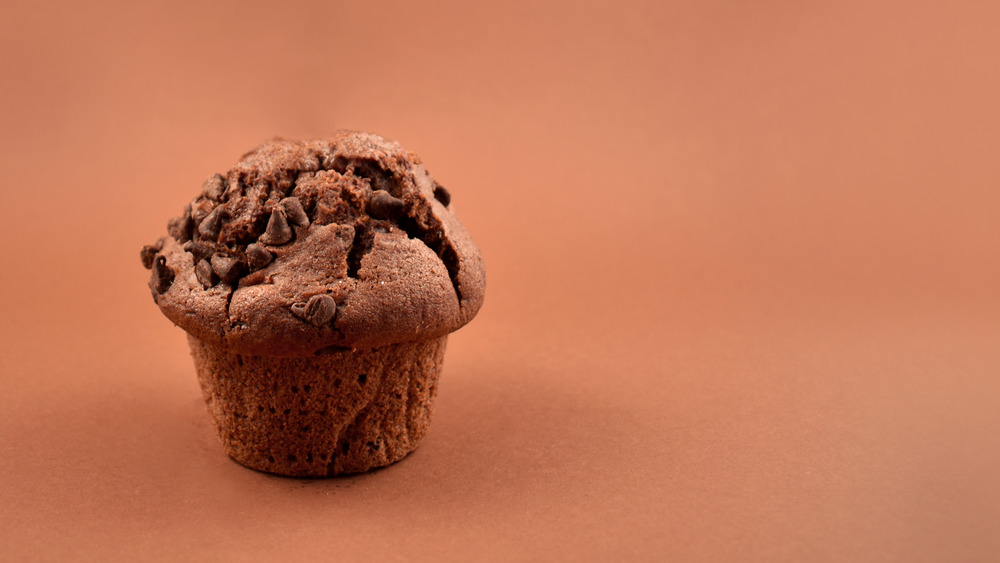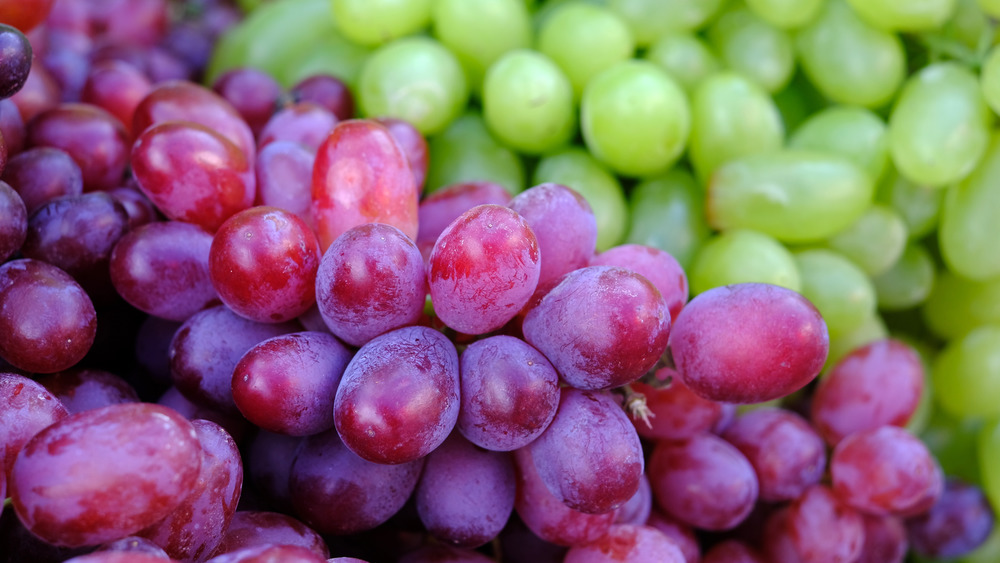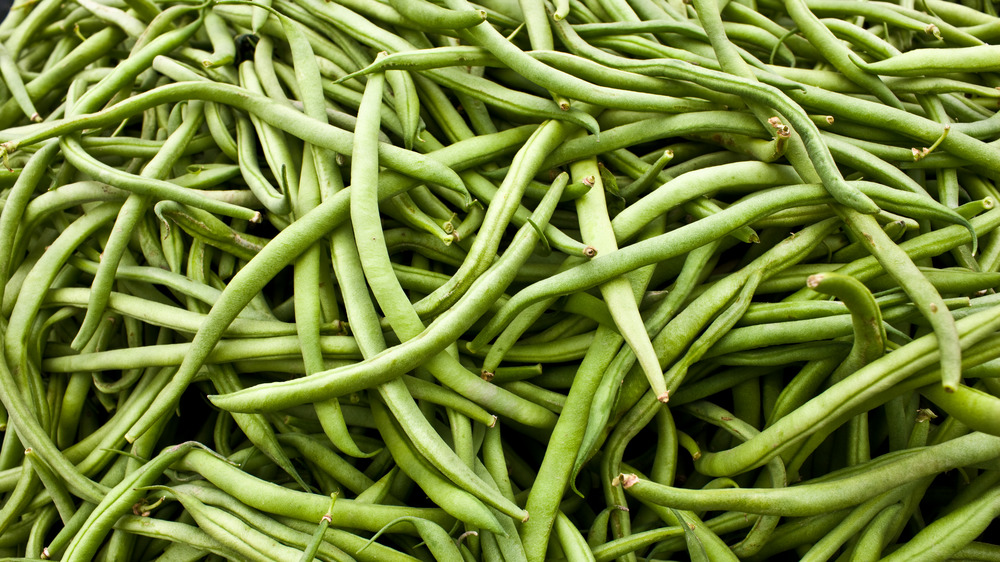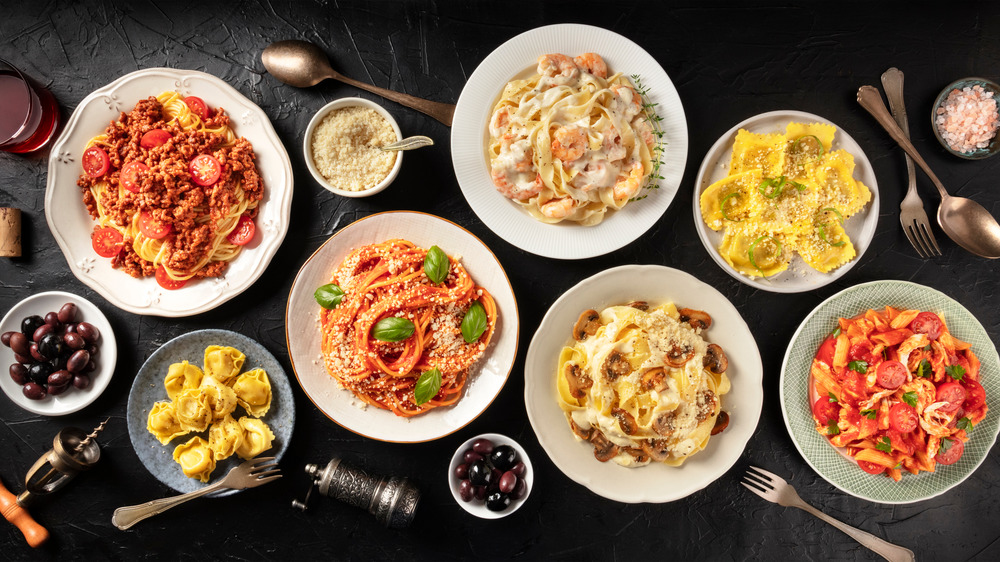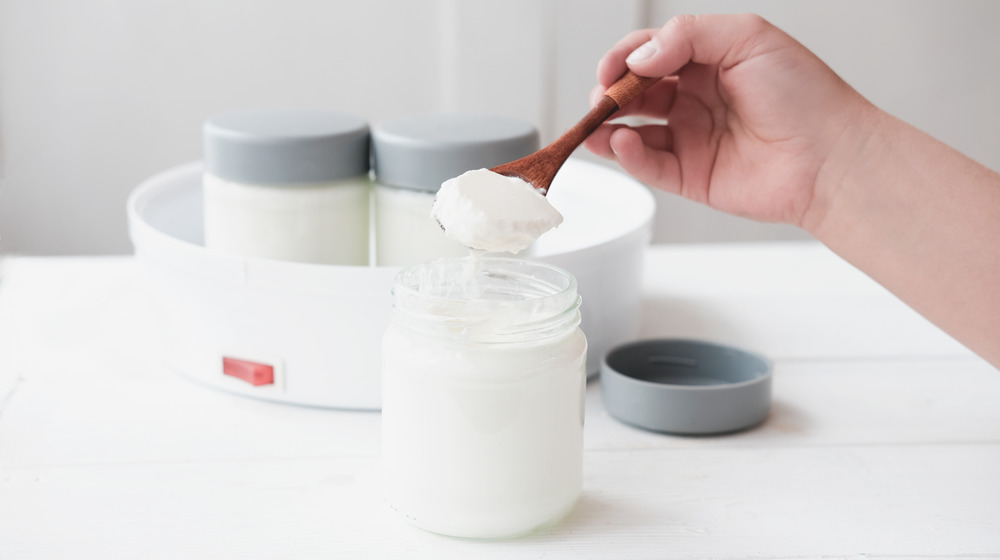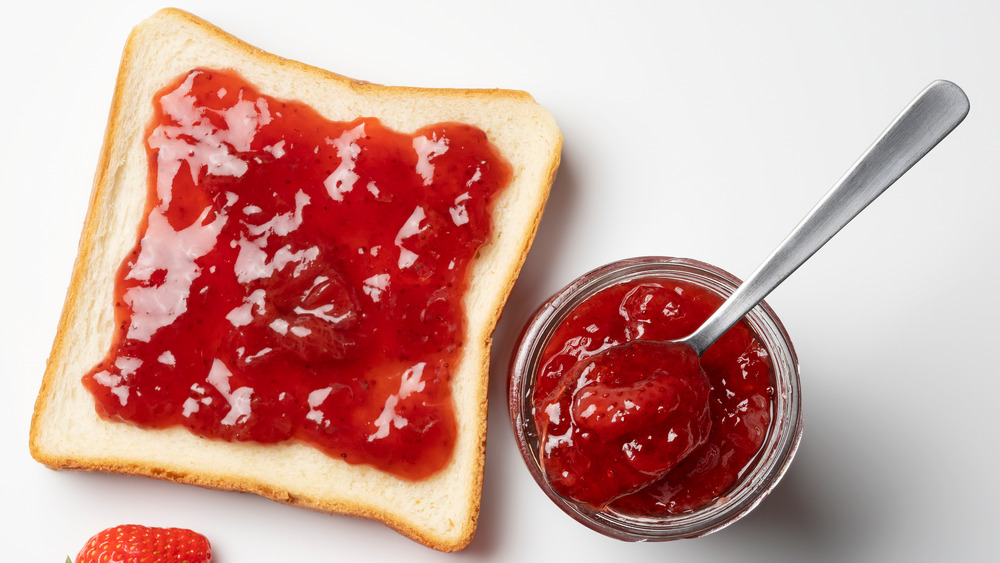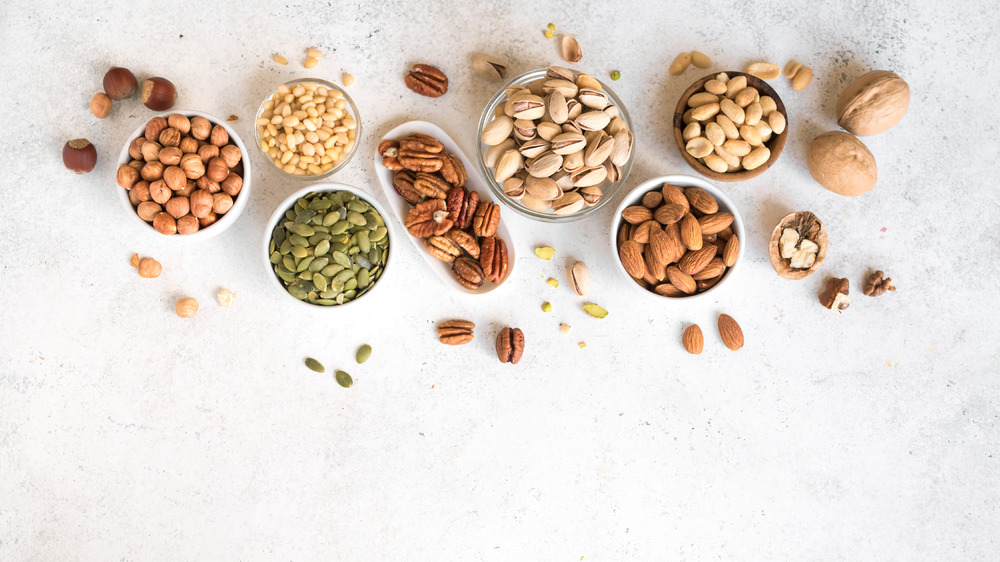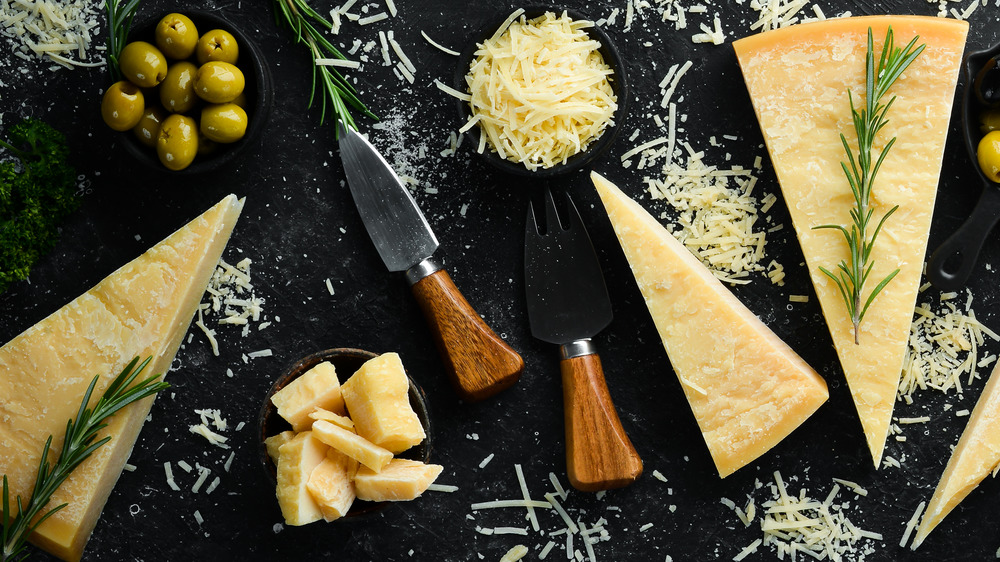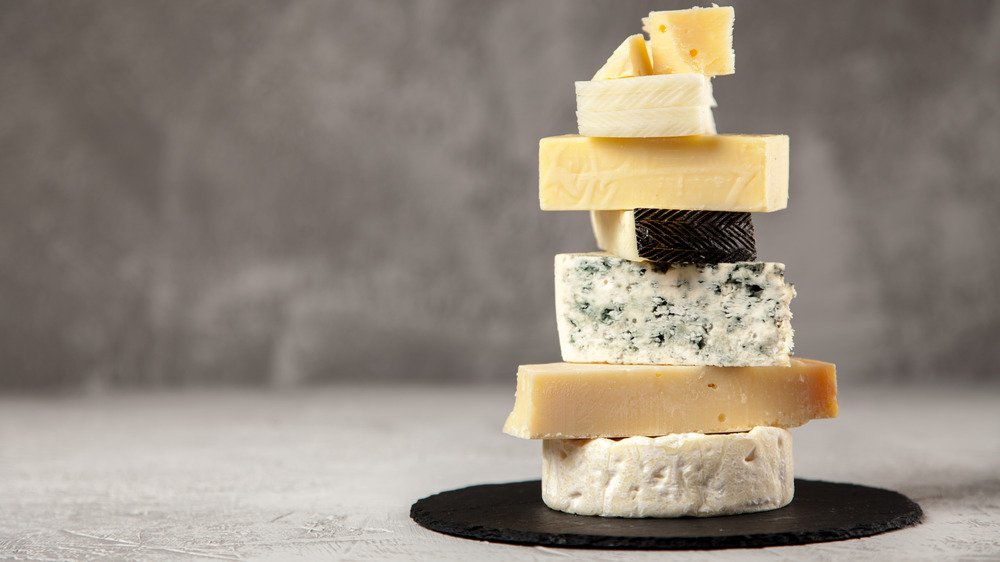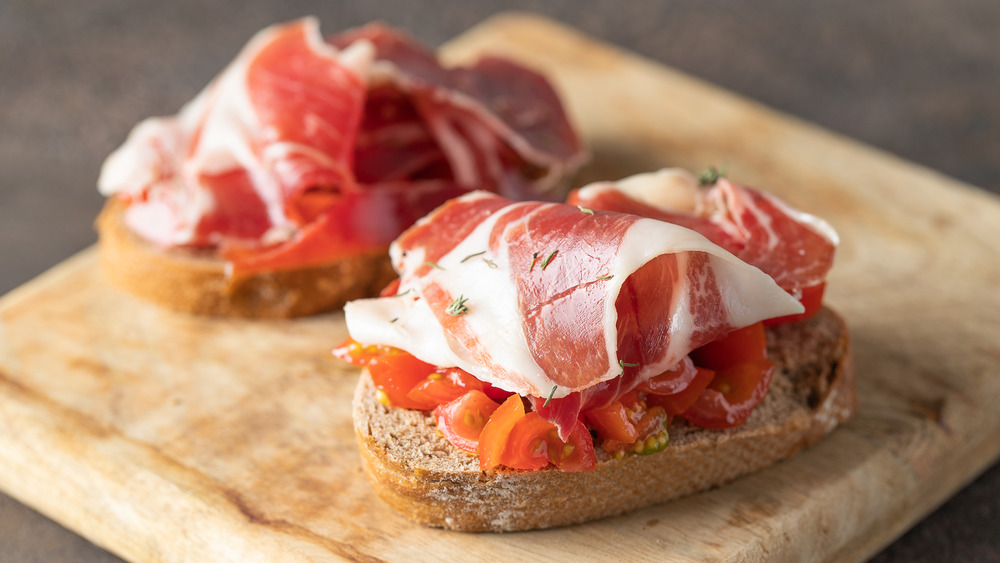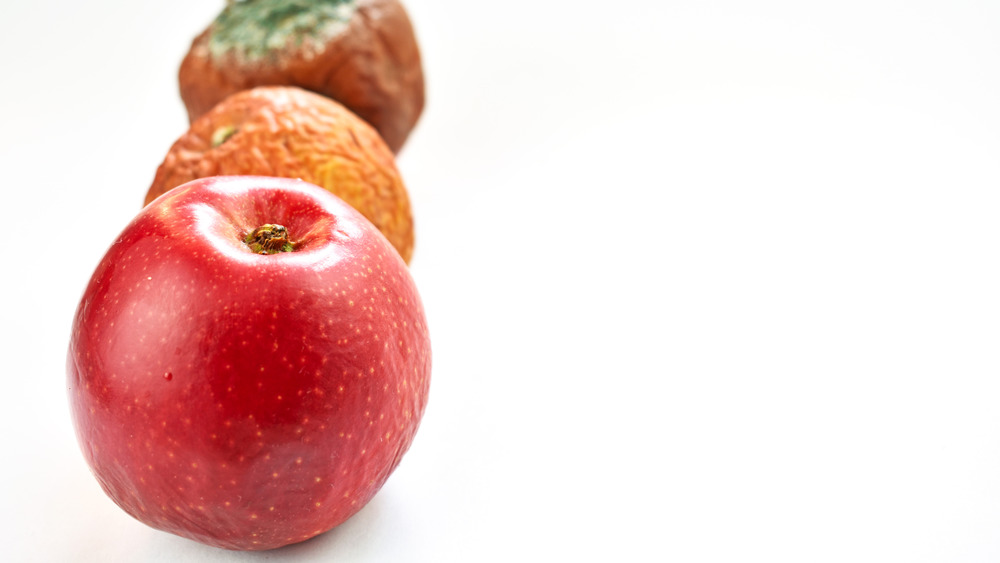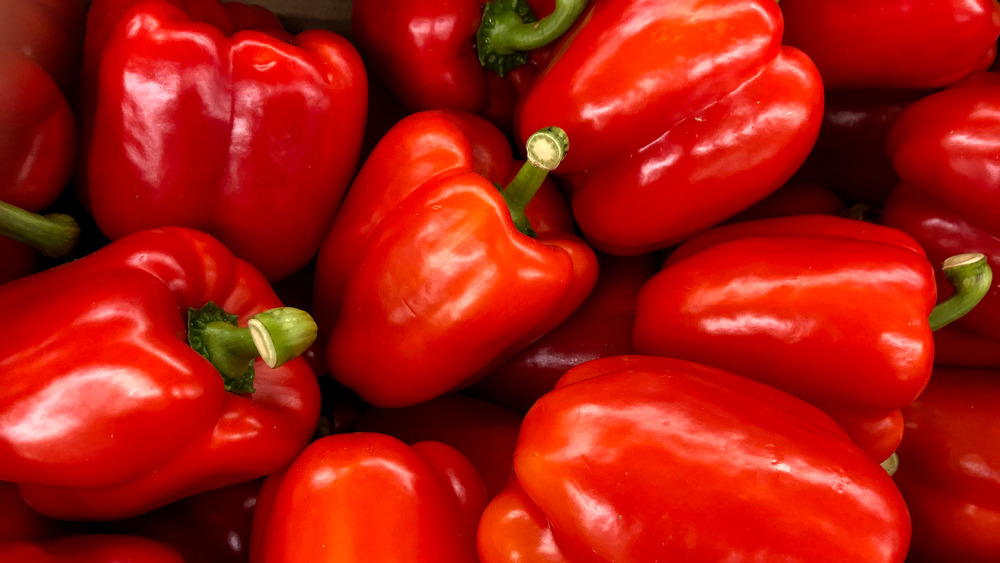5 Foods You Should And 9 Foods You Shouldn't Eat When They're Moldy
Do you know what to do when you spy that green, gray or white fuzz on your food? Better known as mold, this microscopic fungi can grow on the outside peel of an orange, permeate lunchmeat and set up camp in a container of cottage cheese. You never want to eat mold, because there's a risk it could cause an allergic reaction or respiratory issues — or even sicken you enough to send you to the emergency room if it's especially toxic. Thankfully, most people are healthy enough that a couple of accidental bites of a sandwich with unnoticed green fuzz creeping across the bread won't likely hurt them. But how do you keep mold off your food and out of your kitchen?
You could start by examining your groceries to make sure you're not bringing home moldy food in the first place and by keeping your produce dry, since moisture encourages mold growth. And you should know that even though most molds thrive in warmer temperatures, they can also grow on products in your refrigerator. They're also unfazed by salt and sugar.
While you can cut off the mold on some food and keep eating, many experts suggest you toss moldy food and not take the risk. But considering how expensive food is getting, you probably want to know which products you can consume after cutting off the mold and which ones should avoid like the plague. Read on and find out.
Don't eat moldy soft cheeses
Soft cheeses are scrumptious, but not with a coating of mold. Do not take any chances eating soft cheeses that have mold on them, whether it's a bar of cream cheese you wanted to slather on your bagel or a tub of cottage cheese you've been craving since your workout. And If there's mold detected in a bag of crumbled, shredded or even on sliced cheese, play it safe and toss those bags out.
According to The Healthy , softer cheeses are easier for the mold to drill down into, so you can't see what mold and even bacteria are lurking beneath the surface. The last thing you want to do is enjoy that bagel smeared with cream cheese then turn around and get sick from it. Don't even keep the container the soft cheese came in, in case it doesn't come completely clean after being washed.
Don't eat moldy hot dogs, bacon and lunchmeat
Most hot dogs, bacon and lunchmeat products are full of preservatives and sodium that help them last longer. But though you might think they could withstand a smattering of mold considering their lengthy shelf life, that's just not the case, according to the US Department of Agriculture.
The USDA advises that these types of processed meat products contain enough moisture to propel mold to develop past the surface to where you cannot see it, making them unsafe to consume. So, if your cold cuts or other meaty products show funky mold spores, don't take the risk — just toss out that lunchmeat sandwich and find something safer to munch on.
And no, cooking and heating these products won't necessarily erase the harm that can be caused by mold, the USDA says. This advice also stands for leftover meat and poultry — cooking those moldy leftovers also isn't helpful. It's best to stay safe, discard those old scraps, and plan to play it smarter at the grocery store the next time you restock.
Don't eat moldy baked goods
You grab a loaf of bread out of the cupboard, snatch a slice and prepare to pop it in the toaster. That's when you notice the creepy green fuzzy spots spreading across its surface. Who hasn't been there? It's surprisingly easy for mold to grow on soft and porous foods, particularly bread and baked goods.
According to Insider, one mold that commonly grows on bread is called Rhizopus stolonifera, or black bread mold. Scarily enough, black bread mold can cause a deadly infection if consumed. In this case, it's safest to toss out that bread or those baked goods. And don't discard just the one contaminated slice of bread or muffin; it's best to throw out the entire loaf or batch to err on the safer side.
Breads and baked goods are some of the foods that produce toxic byproducts called mycotoxins, which can be poisonous. According to Business Insider, storing breads and baked goods in the refrigerator keeps them cool enough to keep away those pesky mold spores. As for freezing baked goods, be sure to do so correctly.
Don't eat moldy soft fruits
Soft fruits that smoosh or bruise easily are much more prone to turning moldy — these include berries, peaches and grapes. And if you bring home a bag of grapes that looked terrific at the store, only to find a smooshed one covered in mold somewhere in the bag, it's best to just toss the whole bunch, because mold can spread easily and down deeper into softer fruit, Today reports.
Bigger soft fruits, like peaches, can be tossed out individually. Also, do not cut away at the soft fruits to try and salvage them, because it's not worth the risk of eating something that has touched mold.
Why all this extra caution? Soft fruits have high moisture content, making them ideal for mold to thrive in, even if they have a high acid content, the USDA advises. Also, if your soft fruits touch other fruits and vegetables stored around them, do inspect those, because mold from fruits and veggies can spread quickly.
Don't eat moldy soft vegetables (including some that are cooked)
On that note, it would also be wise to closely examine your soft veggies for mold if they've been in the fridge for a while, as soft vegetables are also more prone to growing mold quickly, according to the USDA. Soft veggies include such staples as legumes like green beans and cucumbers and also, cooked vegetables that have high moisture.
Moldy cooked vegetables could be found in dishes like casseroles or stew, and you'd be wise to toss out the whole dish if you come across them, SheKnows reports. But you probably shouldn't panic if you accidentally bite into a moldy one of these veggies: Rudolph Bedford, a gastroenterologist at Providence Saint John's Health Center in Santa Monica, California, told Women's Health that unless your symptoms spiral past simple nausea, you'll most likely be okay. Just examine your leftovers to minimize the likelihood of this happening.
Don't eat moldy pasta dishes
Mmmmm pasta. There's few things more disappointing than when you've been dreaming about reheating a plate of last night's pasta for lunch, but then you discover those funky fuzzy spores lurking beneath the noodles. Ugh, moldy pasta: Can't you simply scoop out the nasty parts and move on with your life? No, not at all.
You cannot eat any pasta dishes that have the slightest trace of mold in them, and it's advised you don't simply remove the moldy spots of cooked pasta because the high moisture content makes it a breeding ground for bacteria and mold. On that note, chances are you can't see just how far the mold has spread into that dish, so even nabbing a corner section far away from the mold simply isn't a good idea. Cut your stomach some slack and throw it away, especially considering how cheap pasta can be to replace.
Don't eat moldy yogurt or sour cream
Soft dairy foods like yogurt and sour cream also come with warning about mold from the USDA. Even though yogurt is a fermented food that is full of healthy probiotic cultures that help regulate the digestive tract, it's quick to grow mold because of its high moisture content.
The mold in yogurt can establish deep roots, and the same rule applies to other soft dairy foods. In fact, wet foods and mold usually go hand in hand, so be sure to give your cup of yogurt a good glance before digging in, Amanda A. Kostro Miller, a registered dietitian and nutrition advisor, told Clean Plates.
And if you notice a yogurt container is bulging, that's most likely extra fermentation, however, because you don't know where that bacteria comes from, you're better off tossing out those containers as well, according to Berkeley Wellness.
Don't eat moldy jams and jellies
If you see some strange growth in a jar of jelly or jam, don't even think about simply scooping it out and digging in. Firstly, jams and jellies have a high moisture content, since they're made of fruit in the first place, which means mold could grow rapidly. And mold that grows in such treats is capable of producing poisonous mycotoxins.
Whether it's a cheaper jar of store brand grape jelly or a fancy glass container of jam, both can put you at risk of becoming quite ill if consumed while moldy. And what exactly could happen if you scoop out that mold and dig in to a jar of old jam anyway? According to the World Health Organization, ingesting mycotoxins could lead to vomiting and other gastrointestinal distress in the short run or potentially even kidney or liver damage, along with an increased risk of some cancers, long-term.
Don't eat moldy nuts
Almonds, pistachios and other nuts harbor a whole host of health benefits, but they also can host mold because of a lack of preservatives, Independent reports. However, nuts and seeds that are salted, roasted or otherwise processed are more likely to contain preservatives and are less likely to develop mold — but aren't excluded from carrying harmful toxins.
According to a study in the journal Microbiology Insights, peanuts, pecans, pistachios, Brazil nuts, walnuts, hazel nuts, and almonds can attract mold, specifically mycotoxins, which the World Health Organization says can cause immediate illness or long-term issues like lower immunity or a higher risk of some cancers.
It's best to examine your nuts and seeds before eating them. Any physical damage, including weird coloring or being shriveled, probably means they're not safe to eat, the WHO advises. And some people wash and dry their nuts and seeds before consuming them in the hopes of warding off any toxins from forming.
Do eat moldy hard cheese
Mice may not care if their cheese has mold on it, but you should. Firstly, this depends if your cheese is hard or soft. While soft cheeses with mold, just like soft dairy products, should be tossed if moldy, hard cheeses that were not made with mold — but you'll have to take an important step to assure safety.
If you notice mold on hard cheese, it can still be eaten so long as you cut off a moldy chunk at least one inch around the spores and below the mold, according to the USDA. But do make sure your knife doesn't touch the mold, because you could spread it further. Also, you'll have to use a new container to cover up the refreshed cheese. And if the hard cheese has more than just one spot and is dotted with green or white fuzzy spots, it's best to just toss it.
Do eat cheeses made with mold
As for cheeses that are made with mold — like Roquefort, blue cheese, Gorgonzola and Stilton — as long as you can safely cut one inch around and below the mold, these cheeses are fine to eat. Some cheese manufacturers use mold to form a protective rind around the exterior of cheeses while other types of cheese, like blue cheese, are spiked with stainless steel rods to help push the mold deep into the cheese for flavor. similarity? Cheese rinds are usually safe to eat, Food & Wine reports, and as long as you're cutting off any extra mold, the hard, moldy cheese they encase most likely are safe as well.
Do eat moldy salami and ham
When you have a hankering for a salami sandwich, but pull out the slab and find there's mold on it, don't fret. You can still save your sandwich snack with some careful maneuvering with a knife. Some hard salamis actually are made with mold that forms the white coating that encases the salami that helps cure the meat and preserve it from bacteria, and dry-cured hams also can develop a similar surface mold. As long as you can scrub off or cut off any mold that forms on these meats, they're fine to keep eating.
In fact, the USDA advises that mold on "dry-cured country hams" is normal, but the mold must be removed before the meat is cooked. Overall, as long as you use caution and wash or scrub away that mold, you can safely have a slice of ham for dinner or a salami sandwich for lunch.
Do eat moldy firm fruit
When your sweet tooth kicks in and you reach for a piece of fruit, but there's white and green funky stuff on it, what should you do? According to Reader's Digest, firm fruits, like some types of pears, are okay to eat but only if you remove the moldy spot and a one-inch perimeter around and below it. But if the mold is on the peel of an orange or a grapefruit, you don't know how deep the mold spore's roots have gone into the fleshy part, so it's best to toss it.
It's a different story, however, when it's firm fruit that's been peeled and cut. Those fresh pieces of fruit should be avoided at all costs and tossed out. Mold has probably already reached the fresh pieces, so no matter how your formerly fresh fruit salad looks, if there's mold, don't risk it.
Do eat moldy firm veggies
You have the green light to eat firm vegetables that have some mold on them as long as you cut it away in that one-inch safety perimeter we've talked about. Firm veggies such as carrots, cabbage and peppers are perfectly fine to consume once the mold is gone and it's been thoroughly washed, the USDA says. But do use caution when cutting off the mold, because, as with other moldy foods, you could contaminate your knife.
According to Reader's Digest, peppers and carrots actually are thrown out "too soon" because of mold contamination. However, if these particular pieces of produce have been cooked and now are moldy, it's time to toss them out. Veggies are a staple in casseroles, for example, so even if it started out as a firm veggie, once it's cooked and becomes moldy, it's off limits. Feed it to the garbage can and cut your losses.
